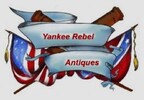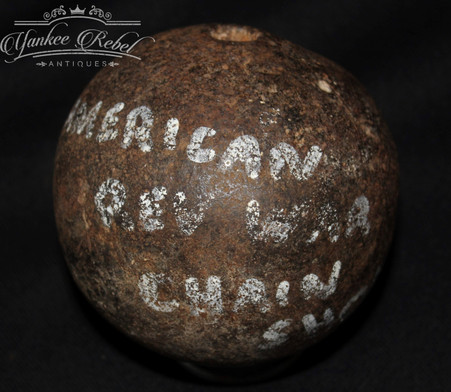 Loading... Please wait...
Loading... Please wait...-
Call us on (973) 810-2976
- My Account
- Gift Certificates
- Items / $0.00
All prices are in All prices are in USD
Categories
- Home
- Artillery related items
- Revolutionary War Ball from a Chain Shot projectile, recovered at Fort Ticonderoga, NY
- Home
- Identified Artifacts
- Revolutionary War Ball from a Chain Shot projectile, recovered at Fort Ticonderoga, NY
- Home
- Excavated Artifacts
- Revolutionary War Ball from a Chain Shot projectile, recovered at Fort Ticonderoga, NY
- Home
- Late 18th Century / Early 19th Century
- Revolutionary War Ball from a Chain Shot projectile, recovered at Fort Ticonderoga, NY
- Home
- Revolutionary War items
- Revolutionary War Ball from a Chain Shot projectile, recovered at Fort Ticonderoga, NY
- Home
- REVOLUTIONARY WAR ARTILLERY
- Revolutionary War Ball from a Chain Shot projectile, recovered at Fort Ticonderoga, NY
Revolutionary War Ball from a Chain Shot projectile, recovered at Fort Ticonderoga, NY
Out of Stock
Product Description
This is another nice early piece coming out of a 60-year collection of Revolutionary War and French & Indian War artillery. Being offered is section of a Revolutionary War Chain Shot. The ball has a diameter of 3 ¾ inches and weighs 6 pounds, 14 ounces. This would have been one of the two balls attached to a chain and fired from a 6-pounder cannon. During the Revolution both sides made extensive use of artillery with Bar Shot and Chain Shot. It was recovered many years ago at Fort Ticonderoga, NY.
At the beginning of the war the Patriots had almost no artillery of their own, but Washington used captured British guns from Fort Ticonderoga to drive the British out of Boston in 1776 (see period cannon). The Americans eventually developed the capacity to manufacture their own cannon, and they obtained many of the guns they needed from France. This cannonball was recovered from Ft. Ticonderoga.
Located on Lake Champlain in northeastern New York, Fort Ticonderoga served as a key point of access to both Canada and the Hudson River Valley during the French and Indian War. On May 10, 1775, Benedict Arnold joined Ethan Allen and the Green Mountain Boys of Vermont in a dawn attack on the fort, surprising and capturing the sleeping British garrison. Although it was a small-scale conflict, the Battle of Fort Ticonderoga was the first American victory of the Revolutionary War and would give the Continental Army much-needed artillery to be used in future battles.
Chain shot was generally used aboard ship as it was designed effectively to carry away masts and rigging. Either split shot (two halves) or two solid shot were connected by a length of chain. Upon firing, each shot would pull in a different direction creating a rotating motion around the center mass. On land, it was most effective against a cavalry charge, taking out the horses legs or gouging a chunk of infantry in line. In “Collector’s Illustrated Encyclopedia of the American Revolution”, by Neumann & Kravic, there are examples of chain shot (see pictures).
The ball has a round hole going through it which would have had an iron rod to attach to the chain. It is solid and in nice condition, indicative of a very early recovery. This collection began in the late 1950s and was created by private acquisitions, closed museums, and from lake divers. The collector meticulously displayed and cataloged every piece along with its provenance. His markings were crude at the time, but now they have proved to be very important. Many of the pieces went through electrolysis to remove crusted rust.
This is the first time this cannonball has been on the open market, and it is truly a great piece of early American History. It definitely merits a place in an advanced collection or museum. As with all the pieces in this esteemed collection, a Certificate of Authenticity will be included.



